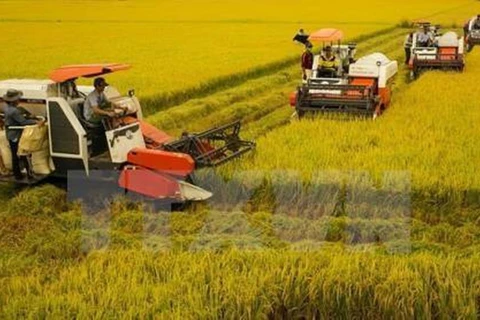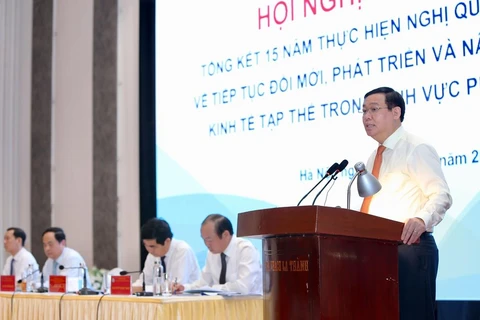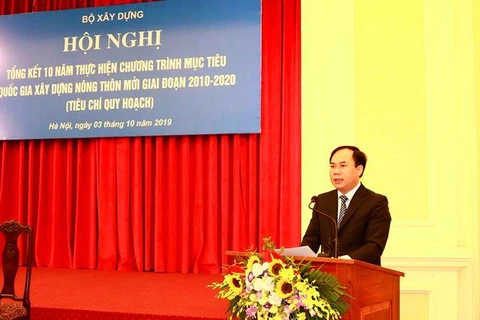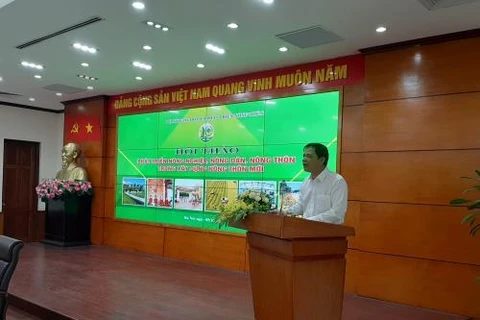Hanoi (VNA) – Vietnam’s countryside has got a facelift after the decade-long implementation of the new-style rural area building programme. But the next phase will face more difficulties as communes yet to earn the status need exclusive support policies to fulfil the new-style rural goals.
The information was told at the seminar on the 10-year implementation of new-style rural area building programme held by the Government Portal in Hanoi on October 8.
About 51 percent of Vietnam’s communes have earned new-style rural status and 91 districts of 34 cities and provinces have fulfilled new-style rural goals since the programme was launched in 2010.
After a decade, thanks to heavy investment in infrastructure development, the country’s countryside has seen considerable socio-economic progress with improved production organisation and living standard of the locals. With more transparent investment mechanisms, resources for new-style rural building have been mobilised and used efficiently.
Nam Dinh is regarded as one of the leading provinces in new-style rural building. Farmers’ stable life lays a solid foundation for the local socio-economic development, said Nguyen Doan Lam, Director of the provincial Department of Agriculture and Rural Development.
So the province has strived to develop its rural areas where infrastructure is improved while people have stable sources of income and live in a clean environment.
“Rural agriculture is being restructured towards sustainable commodity production,” Lam said. “The subsistence agriculture no longer exists. In recent years, Nam Dinh has shifted to a production for both self-serving and commodity purposes.”
The province aims to have 7 percent of communes and at least five districts earning advanced new-style rural status, he added.
The level of fulfilling new-style rural standards varies among regions but Vietnam’s overall rural picture has seen positive changes Tran Van Mon, from rural landscapes to farmers’ mental lives and living standard, said Tran Van Mon, Deputy Chief of Office of the National Target Programme on New Rural Development under the Ministry of Agriculture and Rural Development.
Putting aside what has been achieved between 2010 and 2020, the new-style rural programme in the next phase will be likely to experience a more bumpy road as nearly half of the communes, most of which are remote and far-flung, are yet to reach required standards.
Building the new-style rural areas over the last decade was like picking the fruits which are at a closest distance, said former editor-in-chief of Tap Chi Nong Thon (Rural Magazine) Hoang Trong Thuy. It will be not that easy since in the second phase, the fruits will be at the highest, farthest distance and even hardest to get, he said.
It is much more harder to get the remaining communes achieve new-style rural standards as most of them are sparsely populated and located in mountainous and remote areas, Mon said. It will be very difficult to invest money in building roads and developing electricity and water supply facilities on a hill which is only inhabited by a dozen of households, he cited an example.
The immediate solution is to implement the programme at the level of a village or hamlet because there are villages and hamlets as wide as an entire commune, or even two or three communes combined, he said. “So that, we are piloting this new approach to formulate proper support policies.”
He noted that the support policies will prioritise providing resources for particularly disadvantaged communes and mobilize additional resources for these communes from poverty reduction projects, projects exclusively designed for ethnic minority people and those funded by both domestic and international sponsors, he added.
Particularly, these communes will be helped to take advantage of a local signature product, such as a tourism service or traditional product; and to boost tourism in tandem with building new-style rural areas.
It is necessary to adopt special support policies for particularly disadvantaged communes, in terms of residential land, farming land, credit provision and education. Most importantly, it is crucial to relocate people to avoid flash flood and promptly respond to climate change, Thuy said.
Only when their safety and production are guaranteed, can people be persist in pursuing new-style rural goals, he said./.

























